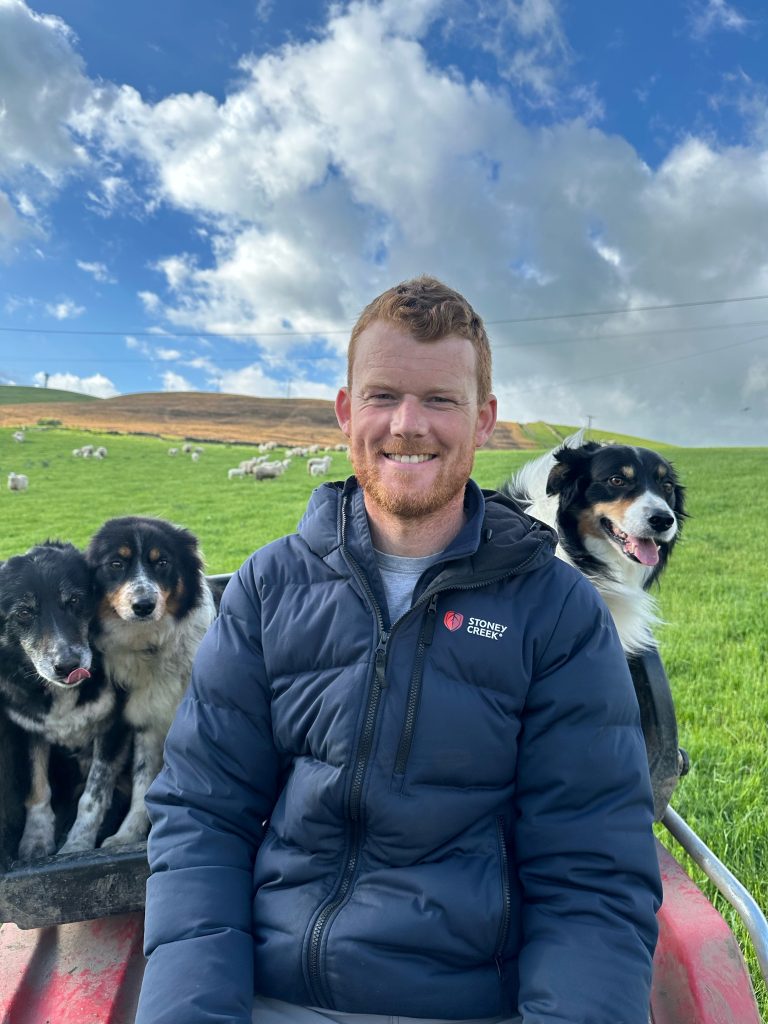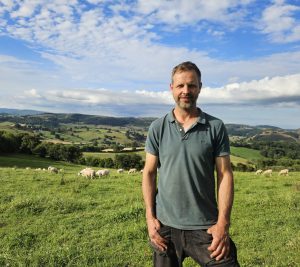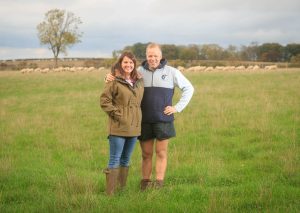with thanks to Robert Black, Drochil Castle Farm, West Linton
Scoping out a simpler, easier to manage, sustainable sheep farming enterprise, led Robert Black to swap the unit’s traditional breeds for forage bred and reared maternal genetics from Innovis which he says has transformed the business.
“Our stratified system has gone. Introducing the Aberfield, and latterly grading up our Texel cross flock to pure Highlander status has enabled us to significantly cut input costs,” he explains. “We no longer have a full-time employee, we can now be totally reliant on forage and don’t need to feed any concentrate, and we have a more efficient, more sustainable and more profitable business. Furthermore, farming is now more enjoyable.
“The Highlanders are achieving an acceptable balance between scanning and rearing, a respective 180% and 150%. We’ve gone from March indoor lambing to the complete flock lambed outdoors in April and we find they’re extremely easy to lamb with just 1% assistance required. They make efficient mothers with plenty of milk and good udders, they take their lambs with them, and that bit of extra wool cover helps.”
After 12-week weaning, lambs are mobbed up into male and female groups and rotated on red clover silage aftermaths achieving batch averages of over 350g DLWG. All ewe lambs are mated and if not in lamb they are culled. “Early puberty means we can lamb the ewe lambs, a practice which I think sets them up for life,” he says.
“The first draw reaches 20kg target weight and within the R spec by 14 weeks, while the entire crop is similarly away off pure forage diets and sold deadweight by the end of the year.”
Drochil Castle Farm flock performance 2023
| Highlander | |
| Ram : ewe ratio | 1 : 100 |
| Ram longevity (ave mating seasons) | 4 |
| Scan % | 180 |
| Reared % | 150 |
Source: Drochil Castle Farm
The Blacks had farmed a ‘fairly’ intensive traditional system breeding Scotch Mules to cross to the Texel for finished lamb production. “We were looking to simplify things. We used to farm so many breeds; while breeding our own Scotch Mule replacements we were still buying in Blackface ewe lambs and tups, and the most expensive turned out to have the lowest value when we sold them as culls and we had all the bother in between with foot problems, barrens and so on.
“At the time, we were also making changes in cropping to rely more on quality forage, we were subsequently looking for a maternal breed with grazing power, a single breed that could thrive anywhere on our unit which is split between hill and upland and that would enable us to develop a closed flock. Investing in performance recorded sheep was also a bonus.”
The Aberfield was introduced to Drochil in 2016 to cross with the Blackface, followed by the Highlander to grade up to a pure flock, and the rest is history.
Robert says the Highlanders, which are maturing at a lighter 65kg to 70kg, are perfectly suited to the unit’s rotational grazing system. “We set stock at three ewes per acre at lambing, Rotating starts roughly one month after lambing towards the end of May; we start to mob up to 200 ewes with lambs on 10 acres for three to four days. It takes about 20 days to do one full circuit, depending on growth and season. After weaning, depending on grazing availability, ewes are usually drafted on to the hill while lambs move on to red clover rich aftermaths.”
Robert adds: “Going forward, I intend to use selection pressure as much as possible, with the aim of never drenching adult sheep. Being able to handle large mobs with sheep that thrive from forage and can bounce back from dry times on this drought prone farm is essential.”



